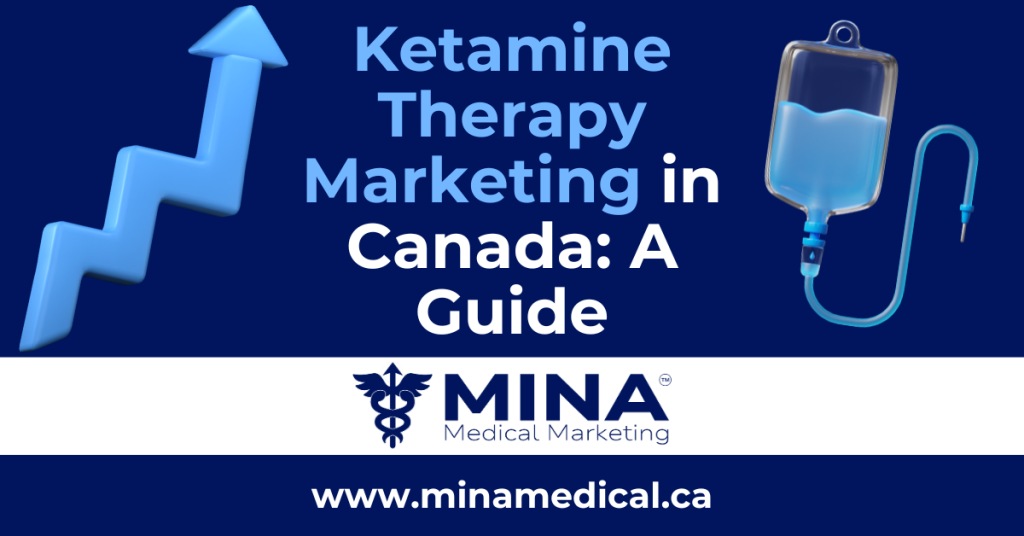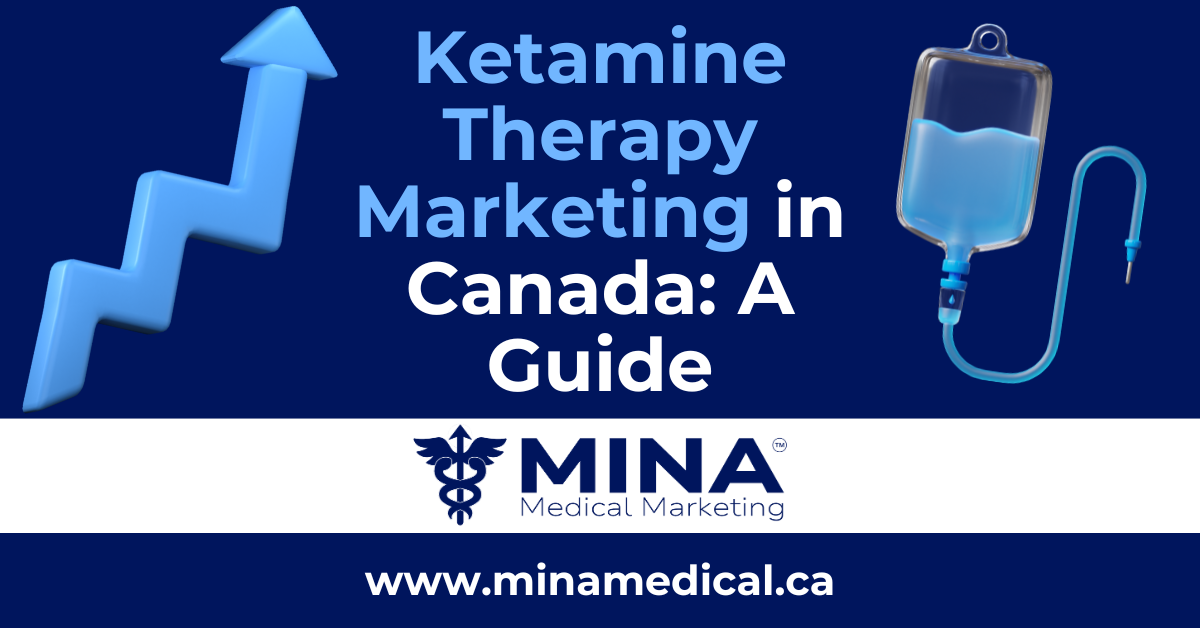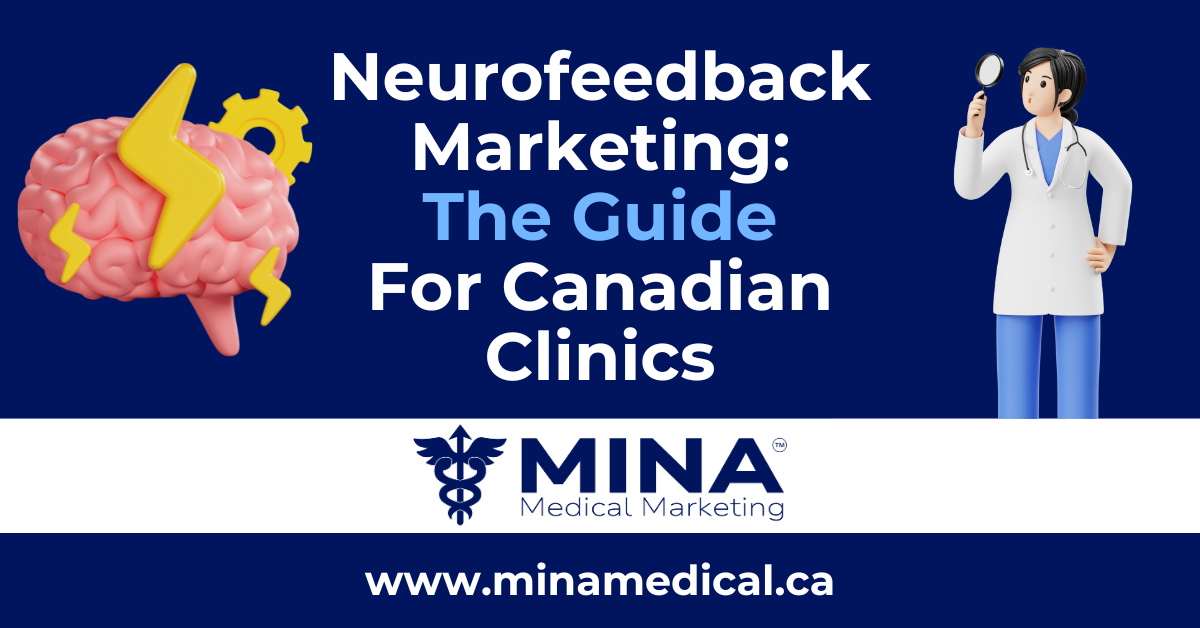Grow qualified consultations for ketamine therapy through marketing with clear positioning, patient‑centered messaging, and measurement that drives decisions. All tailored to ketamine clinics in Canada
Ketamine Therapy Marketing in Canada: What Makes It Different
Marketing ketamine therapy isn’t a generic mental health marketing campaign with a new headline. Prospective patients are weighing a specialised, supervised care pathway and want to know exactly how it works, what the first step looks like, and how your clinic supports them throughout the process. Strong ketamine clinic marketing starts by explaining the journey in plain language, avoiding promises you can’t make, and showing the expertise of your team and setting.
In practice, that means:
- Lead with the care pathway (assessment → supervised sessions → integration/support → follow‑ups).
- Keep fees, logistics, and timelines transparent.
- Use measured, evidence‑aware language that informs without overpromising.
Ketamine Therapy Marketing vs. Generic Mental Health Marketing
Education comes first. People exploring options for treatment‑resistant depression, or curious about adjunctive support for anxiety or PTSD‑related symptoms, arrive with a long list of questions. Your job is to answer them without hype.
Emphasise:
- Intake & candidacy (who may be considered, how decisions are made).
- Monitoring & safety (what happens in‑clinic, after‑visit guidance).
- Integration with psychotherapy and how progress reviews work.
Ketamine Clinic Marketing Personas & Search Intent
Effective ketamine therapy marketing meets people where they are. For those exploring options for treatment‑resistant depression, speak with empathy to the reality of having tried multiple approaches and now seeking a structured, supervised pathway. For audiences considering adjunctive support for anxiety or PTSD‑related symptoms, clarify how integration with therapy works and how expectations are set.
Local discovery cues to include on key pages:
- Full address and hours, transit/parking details, and neighbourhood context.
- Up‑to‑date team bios and professional photos of the care setting.
- A consistent Google Business Profile (matching NAP, recent photos, concise services, Q&A).
Offers That Convert in Ketamine Therapy Marketing
The purpose of ketamine clinic marketing is not more traffic. It’s more booked consultations with qualified patients. Anchor your offer around an assessment‑first pathway and make booking simple.
What works:
- A clearly described consultation or eligibility assessment as the first step.
- Two friction‑free booking options: self‑serve calendar and call‑to‑book.
- A one‑line journey: Consult → Supervised Sessions → Integration & Follow‑up.
Tone to maintain: informative, measured, free from guarantees, focused on suitability, supervision, and support.
Many clinics also pair ketamine therapy with TMS, offering assessment-first bundles (ketamine + TMS + integration sessions) to match patient needs, see our TMS marketing playbook for packaging and positioning.
Local SEO for Ketamine Therapy (Canada)
Search visibility grows when your site mirrors how people look for help. Build a clear architecture with three pillars, those being services, conditions, and cities. Always make sure to write for humans first, not search engines.
Site architecture blueprint:
- Services: Ketamine‑Assisted Therapy; Supervised Ketamine Sessions; Integration Support.
- Conditions: Treatment‑Resistant Depression (TRD); adjunct care in anxiety/PTSD contexts.
- Cities: Only for locations you truly serve; include directions and local proof.
On‑page enhancers (E‑E‑A‑T):
- Clinician bios and credentials; a short walkthrough of the setting and monitoring process.
- Fast, mobile‑first pages; descriptive H1/H2/H3 headings; helpful alt text.
- A compact FAQ on each core page to answer common questions and reduce bounces.
Content That Ranks & Converts for Ketamine Therapy
Use your blog and resource hub to educate with empathy. Each article should have a clear primary topic, weave in related phrases naturally, and end with a straightforward invitation to book an assessment.
Evergreen topics to cover:
- What to expect in a supervised session and how candidacy is determined.
- Cost ranges and practical considerations (escort, rest period, return‑to‑work timing).
- How integration alongside therapy works and how progress is reviewed.
Storytelling guidelines:
- Short, anonymised vignettes about the clinic experience (intake clarity, staff communication, supportive atmosphere).
- Respectful tone; no outcome promises. Keep it patient‑centered. This also ensures you stay compliant and don’t end up in hot water. Ketamine therapy marketing is highly regulated, both by regulatory bodies as well as advertising platforms!
Landing Page Framework
A strong landing page uses the first screen to state who you help, how the process works, and a single primary call‑to‑action to Book an Assessment.

Above‑the‑fold essentials:
- Crisp value statement; “what to expect” in one or two lines.
- Prominent Book an Assessment button and a phone option.
Objection handling below the fold:
- Eligibility at a glance; monitoring and after‑visit guidance.
- Time in clinic and transportation notes; what a consult fee covers.
Credibility blocks:
- Team credentials, clinic photos, and a simple explanation of follow‑up and reviews.
Performance Marketing for Ketamine Therapy Marketing (No Jargon)
You don’t need platform specifics to scale; you need a performance mindset that aligns message, creative, and landing pages around one outcome: qualified consultations.
Principles to operationalise:
- Define success as booked assessments and supported follow‑ups, not clicks.
- Maintain message‑match between ad and landing page.
- Make the path to the calendar obvious; reduce steps and distractions.
- Treat measurement as non‑negotiable; use it to refine copy, offers, and pages monthly.
Tracking & Reporting
Measurement is the feedback loop that powers better decisions. Track what matters and review it consistently.
Core metrics:
- Consultation requests, show rate, and progression through the care pathway.
- Performance by channel, city, and page so investment follows outcomes.
Workflow:
- Maintain a clean dashboard surfacing booked assessments by source.
- Review weekly for signals; make allocation decisions monthly.
Common Mistakes in Ketamine Therapy Marketing (To Avoid)
- Vague messaging: Generic claims that ignore an assessment‑first pathway.
- Thin pages: Shallow service, condition, or city pages that neither rank nor reassure.
- Unclear offers: Multiple CTAs or missing next steps that increase friction to book.
How MINA Medical Marketing Scales Ketamine Therapy Marketing
Partnering with a team that specializes in performance‑driven healthcare growth lets you stay focused on care. At MINA Medical Marketing, we define the audience and messaging, then build conversion‑ready websites and landing pages that educate, reassure, and convert. We maintain a steady cadence of content tailored to ketamine therapy marketing so search visibility compounds over time. Most importantly, we report on the full journey, from click to booked assessment and follow‑ups, so every decision is tied to outcomes, not vanity metrics. If you’re ready to grow with a calm, compliant approach that respects your patients and your practice, book a strategy call and let’s map your path.
FAQs: Ketamine Therapy Marketing in Canada
How long does ketamine clinic marketing take to generate consults? Clinics with clear offers and conversion‑ready pages often see booked assessments early in a campaign. Sustainable growth usually builds over the first two to three months as messaging and measurement are refined.
Do we need dedicated pages for ketamine therapy marketing? Yes. Service, condition, and city pages match how people search and improve conversion by answering the questions that matter most.
What’s a good cost‑per‑consult in ketamine clinic marketing? Benchmarks vary by city and competition. Optimise for booked assessments and supported follow‑ups rather than clicks; let that metric guide budget and creative decisions.






